Will Work For Good
Secrets to Their Success
It's a well-known fact that healthier employees save businesses money
 It's a well-known fact that healthier employees save businesses money
It's a well-known fact that healthier employees save businesses moneyWhat makes a great job great? That was the big question we set out to answer with our third annual list of ���ϳԹ���‘s Best Places to Work. Because after two years of celebrating some phenomenal employers, we felt energized—Look! They’re successful precisely because they support a proper work-life balance!—but also unsure how to proceed. We wanted more takeaway. We wanted to show other businesses the light. So this time around we drilled to the core of our winners’ philosophies and practices to look for common strategies. As it turns out, companies from a vast array of industries are following the same enlightened paths.
READ NOW.
INTERACTIVE: Need a New Job?
Sort through ���ϳԹ���’s 50 best places to work by rank, location, average salary, and other key factors.
My Company
Leaders of the nation’s best businesses share their guiding principles.
READ NOW.
From the Companies
Our 50 winners share details on their fitness benefits, green initiatives, business practices, and more.
READ NOW.
Make ‘Em Sweat
Secret 1
It's a well-known fact that healthier employees save businesses money
 It's a well-known fact that healthier employees save businesses money
It's a well-known fact that healthier employees save businesses moneyIn 2008, New Belgium Brewery (#2 on our list) employees Lora Heckman (planning and design), KC McCuiston (facilities), and Jason Trujillo (quality assurance) looked out at the company’s 50-acre property in Fort Collins, Colorado, and thought, Hey, we could put a great cyclocross course here. So they did. “I’m sure someone looked into insurance,” says media relations director Bryan Simpson, “but we broke the trail pretty quickly.” Three years later, staffers take spins during the workday and host a six-week public race series in the fall. Bocce, yoga, and beach volleyball are other popular diversions. “It’s harder for the production folks to peel away from the line,” notes Simpson, “but they have a Ping-Pong table in there.”
It’s a well-known fact that healthier employees save businesses money. But many of our Best Places to Work go far beyond the standard treadmill-and-weights corporate gym with exceptional on-site facilities, wellness programs, and reimbursements for ski passes, gym memberships, and race-entry fees. The Team Sports Committee at Alaskan Brewing Company (#17) helped a group of employees train for and climb Mount Rainier, where they planted the company banner on the summit. Nutritional-supplements manufacturer USANA Health Sciences (#13) offers a 2,000-square-foot gym that’s open 24 hours a day, with a basketball court and classes such as Zumba and CrossFit. At Smith Optics (#4), the staff has a locker room and gear room, and the president encourages employees to skip work on big snow days. “You get a ton of grief for not taking advantage,” says PR manager Greg Randolph.
And then there’s Clif Bar & Company (#3), whose offerings are almost hard to believe: personal training, massages, nutritional counseling, a fully equipped gym, a spring-loaded wooden floor in the yoga room, a menu of 32 fitness classes (including off-site options like surfing lessons), and two and a half hours of paid workout time per week. It’s amazing they have any of their products left to sell.
Destroy the Cubicles
Secret 2
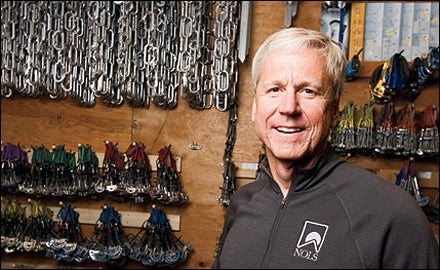
Because inspired people need inspired surroundings. You know, things like surfboard storage (Redspin, #24), dog-friendly offices (too many to name), and even kegerators (Smith Optics). Other companies, like Nau (#22) and Ruff Wear (#41), have removed barriers to communication by, well, removing walls. At both outfits, employees sit in an open-floor work space, creating a vibe that encourages a smoother flow of ideas. At Horny Toad (#37), brainstorming sessions often happen over the office Ping-Pong table, and the fine people at ���ϳԹ��� Life Journeys (#45) run their operation in a modified Victorian in the middle of Missoula, Montana. Management principle? It’s easier to stay calm when your desk sits in a bedroom.
When Keen (#28) converted an old warehouse in Portland, Oregon’s Pearl District into a new company HQ four years ago, they took the opportunity to rethink work space entirely. The defining feature is a 3,000-square-foot “living room” outfitted with accessories such as a Wii game console, a movie screen and projector, and musical instruments. “There are times when you’re playing and times when you’re working,” says Kate Lee, Keen’s head of human resources. There are also times when you’re sharing: Keen lets local nonprofits use the space for fundraising and other activities. “We wanted an office that reflects the values of Keen and the needs of our people,” says Lee. “That’s what we have.”
Pay It Forward
Secret 3
Darren Bush
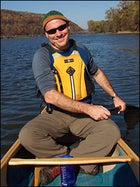 Darren Bush
Darren BushLast October, when a massive pine beetle infestation in Steamboat Springs, Colorado, forced the U.S. Forest Service to start clear-cutting dead and dying trees, SmartWool (#18) saw an opportunity for one of their biannual Serve-A-Palooza days. Twenty employees hit the woods, sawed and chopped like mad, and delivered bundles of firewood to families in need. “It was an awesome, emotional day,” says sales rep Erin di Sanpi, who headed up the project. Workers there and at parent company Timberland (#31) are allowed 40 hours a year to volunteer. Marketing production manager Andrew Bisbee spent his time with a group cutting a new mountain-bike trail—a project that offered a little payback. “Yeah,” he admits, “we reaped the benefit.”
As smart business leaders know, this type of community service can inspire innovation and teamwork. “We’re passionate about our jobs, but they can dominate your life,” says Jon Harris, a development director at the DREAM Program (#14), a nonprofit mentoring program that serves young people in Vermont. Staffers get two paid volunteer hours a week, which they spend as EMTs, coaches, or advisers at other organizations. “When we volunteer together, there’s a contagious energy,” says Harris. Rally Software (#6) has seen similar enthusiasm. They ask their employees to dedicate one percent of their paid work time to volunteering. In 2009, 62 Rally employees contributed a whopping 2,300 hours. Not surprisingly, these companies tend to attract altruistic people. “It’s probably one of the hiring filters here,” says SmartWool’s di Sanpi. “Many of us are motivated to surpass the 40 volunteer hours on our own time. You don’t have to push to get us out the door.”
Loosen the Reins
Secret 4
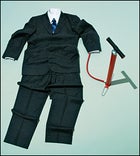 Bike commuting “begins a process of calibration for the day,” says year-round rider Tom Demerly, of
Bike commuting “begins a process of calibration for the day,” says year-round rider Tom Demerly, of As Gary Hamel wrote in
, his influential 2007 book on innovative strategies at top businesses, W. L. Gore & Associates (#16) is “a company built around a set of management principles diametrically opposed to much of modern business orthodoxy.”
He wasn’t exaggerating. Only a handful of Gore employees even have titles, and people work in small, self-directed teams, reporting to each other, not to a boss. At Gore, leaders are selected by their peers, and salary is based on rankings determined by a committee that gathers reports from staffers. Workers are encouraged to use half a day per week as “dabble time” to pursue projects. “You’re able to leverage what you’re good at to help the company be successful,” says Brian Gallagher, who’s worked in marketing at Gore since 2002. “It’s awesome.”
So why haven’t more companies adopted this model? Hamel’s conclusion: fear. Most executives tremble at the notion of handing over so much power. But that’s not the case at Great Harvest Bread Co. (#43), which uses a unique “freedom franchise” model in its 209 licensed bakeries across the country. Ditching the traditional franchise strategy—top-down direction of cloned outlets—Great Harvest operates on a consensus basis, with any changes requiring the approval of an elected council. As CEO Mike Ferretti puts it in the company’s blog, “Giving up control of your business is scary.” But doing so, he says, will ultimately “cement the bond” with your team.
Ignore the Clock
Secret 5

Summer hours. Flex time. Telecommuting. Almost every company on our list finds a way to help employees get out of the office, often so they can do something fun. Among our favorites: #12 Osprey’s “stress-free holiday season” approach, which gives employees time for obligations at home—like stuffing their Thanksgiving turkeys.
Trusting your team to manage their own hours—to come in at 10:30, say, after skiing fresh powder, and then stay until 8—flies in the face of a trend toward squeezing every waking minute out of your staff, but good companies manage to do it while maintaining high output. “This is a results-oriented workplace,” says Mona Patel, the executive VP of people and organizational development at LiveStrong (#32), which allows employees to take unlimited paid time off, with the understanding that they won’t abuse the privilege. (Nobody has.)
As these companies see it, letting workers make time for family or fresh tracks keeps them energized. In some cases, a few hours here and there aren’t enough, which is why Rutabaga (#36) will hold a job open for up to a year if a dedicated worker needs a walkabout. “People need growth to be happy,” says company owner Darren Bush. Patagonia (#30) seconds that notion. Founder Yvon Chouinard, who detailed his own path to responsible business practices in 2005’s
, allows employees to take four-month leaves of absence. Last summer, Patagonia customer-service employee Adam Bradley used his leave to set a new record for the fastest unsupported through-hike of the Pacific Crest Trail: 65 days, nine hours, 58 minutes, and 47 seconds.
Reduce Your Impact
Secret 6
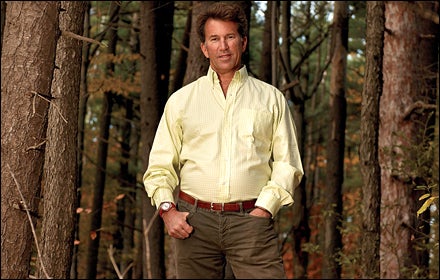
With greenwashing now among the most insidious of corporate marketing tactics, it’s reassuring to see so many businesses adopting honest strategies for environmental responsibility. Some of our companies focus on energy use in their buildings or supply chain, while others concentrate directly on what’s in their products. Timberland (#31), to cite just one example, rates its apparel with a Green Index to determine its environmental impact and includes “nutrition labels” to inform consumers of what’s in their shoes (nearly 80 percent of their footwear includes recycled materials). Seventh Generation (#9) aggressively aids employees with conservation efforts in their non-work lives, offering $500 yearly reimbursements to staffers for home upgrades, plus loans of up to $5,000 to reduce their personal carbon output.
One simple but powerful approach to greening: getting commuters out of cars. Quality Bicycle Products (#39) gives its motorless commuters up to $3 a day in credits toward gear. Last year, they paid out $41,000 to staffers who biked, jogged, scooted, and even skied to their Bloomington, Minnesota, offices, where temperatures often dip into single digits during commute hours. Meanwhile, Osprey (#12) and New Belgium Brewing (#2) give employees new bikes after a year on the job.
Rewarding pedal power isn’t just pro-environment; it’s good for workers. “It begins a process of calibration for the day,” says year-round rider Tom Demerly, manager of bike operations at (#50). “We see tangible results in productivity from people who ride.”
Swag Them!
Secret 7
Swag Them!
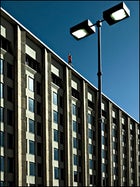 Many companies offer exceptional on-site fitness facilities, plus reimbursements for ski passes and race entry fees
Many companies offer exceptional on-site fitness facilities, plus reimbursements for ski passes and race entry feesBecause nothing shows your staff the love better than free travel, gear, and parties. Natural Habitat ���ϳԹ���s (#1): In addition to free “site inspection” travel opportunities for its staff, NatHab offers discounted travel (80 percent) for a family member—to make sure the trip doesn’t feel like work.
MindBody (#40): Recent company events: a beginner surf clinic, a whale-watching excursion, and a seven-day retreat in Mexico.
Osprey (#12): A floating “powder day.”
Dominion Digital (#49): Team-building exercises include a whitewater-rafting trip down Virginia’s James River and skeet shooting. (Skeet shooting!)
OluKai (#46): Parties include bowling night, a Cinco de Mayo festival, a “snow escape” weekend, a Halloween costume party, and a holiday party at which they give away items like airline tickets and Bose sound systems.
RealeFlow (#34): Last year, the staff took an all-expenses-paid cruise to the Bahamas.
Carmichael Lynch (#15): The annual O’Gong Show talent competition on their rooftop patio. One legendary skit: a male employee re-creating Flashdance‘s “Maniac” scene.
Working Alternatives
WORK ABROAD
Some company somewhere sweet is always hiring—you just need to know how to find it. The easiest method? Teach English. ESL instructors are almost always in demand (check ). But if you don’t want to abandon your profession, start by finding an employer in need in your country of choice, as they can often help cut through the visa red tape. Here’s where to hunt:
Australia & New Zealand:
Europe:
Mexico, Central & South America:
Africa:
All Over:
WORK REMOTELY
With telecommuting increasingly popular, many people are looking to use “I’m remote today” to mean “I’m at the ski cabinbeach shack.” But with cell coverage sketchy in many spots, you end up having to explain curious phone numbers. The solution: Google Voice. The free service, which launched in the U.S. last March, allows users to route calls to wherever they are. Request an invite (), sync it with up to six phones, then click where you want to be rung. (You can add temporary locales like, say, your friend’s lake house.) You can also dial out from any line so your Google number shows up on caller ID, and send and receive SMS texts. Miss a call? Google e-mails you a link to the voicemail recording and a rough transcript—so you can read it on the chairlift.
WORK OUT
It’s a commonly reported notion that group bike rides and other shared workouts have displaced the golf course as top venues for job networking. Great! But what’s the strategy for finding work while hitting your maximum heart rate? We like these tips, adapted from Jeffrey G. Allen’s
:
Be Early: Target sessions before 9 A.M. to sync with the professional crowd.
Be Tactful: Let your coaches know you’re job hunting so they can make introductions.
Be Patient: Don’t pass out your business cards on the first day—make a real connection around your shared sport, then talk business. Just ask Tad Huser, who scored his job as domestic sourcing manager at SmartWool through a contact he made at the 24 Hours of Moab. “We became friends,” he says. “Then when the position came up, she got my résumé in the right hands.”

